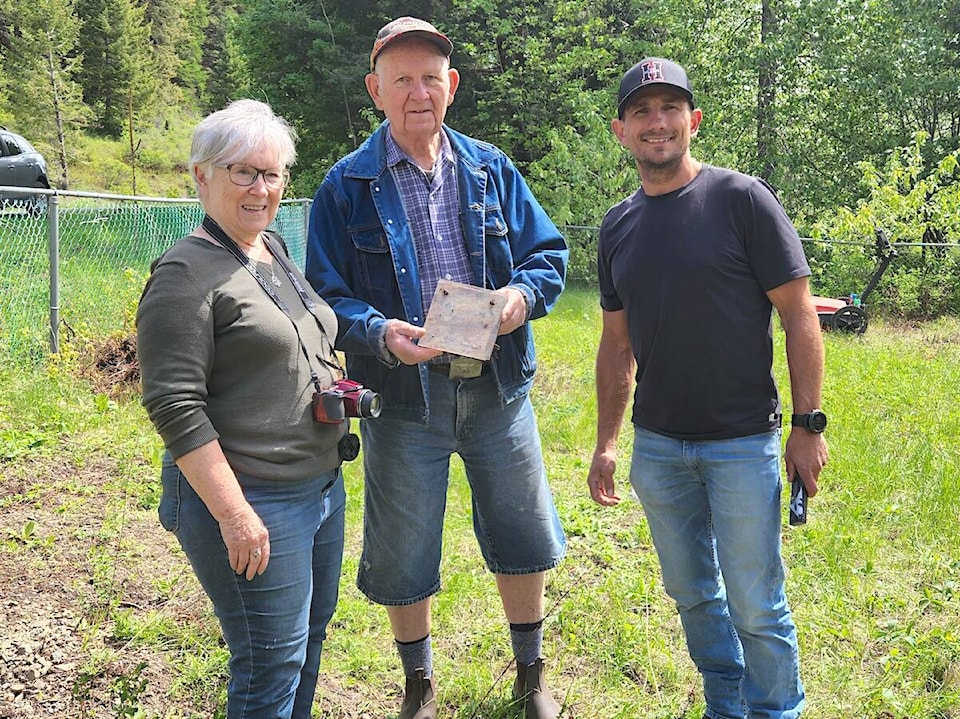Scanning the upper burial ground of Phoenix Cemetery will hopefully bring some peace of mind, says the secretary of the Boundary Historical Society, Doreen Sorensen.
Ground penetrating radar is being performed on the grounds in the hopes of finding any unknown and long-forgotten graves so there is a more accurate record of how many graves are there, said Sorensen. The society brought in Jason Deleurme of Precision Radar Scanning in Kelowna on Thursday to run the radar machine over most of the grounds.
Scanning the graveyard is needed, she said, to give the Society a better idea of how many graves are in there.
“We are here to see if there are any more graves, and respect the people who are here,” she said. “I knew there used to be graves along the fence line, and the middle plots were bought up by the Masons,” she said. “We’ve never really known if there were more graves in there. We put in some markers a while ago, but we did that by researching who they were buried next to.”
Most of the cemetery’s burial records were lost decades ago as people left the city site, records were not preserved and they were either destroyed, or taken, Sorensen said.
During the search, an old, wooden marker was found along the fence line nearest the road. Sorensen said they knew it was in here, but were unable to find it until now. The wooden plaque was faded, with the remains of a name. However, she said it would be helpful as both a piece of the cemetery’s history and could help the Society determine an identity based on what records they have.
Scanning a graveyard like this has its challenges, Deleurme said. The ground is rough, there’s a lot of root balls left over from old bushes and few records for himself to refer to.
Scanning the grounds, he said there are what are called anomalies – places where there appears to be a disturbance – but he can’t say for sure if it’s a grave without a reference.
“There are some places that are indicative of a grave, like the very distinctive depression on the northwest side near a marked child’s grave I see. That could be from a casket that collapsed and the ground filled in,” he said. “You also have to consider a lot of factors, like metal fittings that may have been on the caskets, jewelry people may have worn, and natural factors like rodent tunnels, rocks and buried junk.”
He added old, largely unorganized cemeteries like Phoenix were rarely managed like modern graveyards. Whenever there was a burial it was often family or a designated person in the community that dug the grave and that could’ve been anywhere and any depth. Modern cemeteries are laid out on grids, graves are dug to specific depths and dimensions and staff to manage and care for the graves, as well as keep records.
Once the scan is complete, the Society will be using it for their own records to help determine if there are graves and mark them. The Boundary Woodworkers Guild will be placing markers on what is believed to be graves in the near future.
Like us on Facebook and follow us on Twitter.
@kmckinley
karen.mckinley@blackpress.ca
Like us on Facebook and follow us on Twitter.
